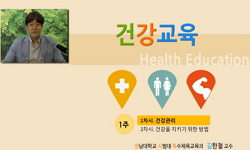본 연구의 목적은 보건소의 보건교육사업을 조사분석하여 보건교육사업의 종류별 특성을 고찰하는 데 있다. 주요 연구문제로는 첫째, 보건교육사업의 주제, 교육대상, 예산 등의 제한점에 ...
http://chineseinput.net/에서 pinyin(병음)방식으로 중국어를 변환할 수 있습니다.
변환된 중국어를 복사하여 사용하시면 됩니다.
- 中文 을 입력하시려면 zhongwen을 입력하시고 space를누르시면됩니다.
- 北京 을 입력하시려면 beijing을 입력하시고 space를 누르시면 됩니다.
https://www.riss.kr/link?id=A103530044
- 저자
- 발행기관
- 학술지명
- 권호사항
-
발행연도
2003
-
작성언어
Korean
- 주제어
-
등재정보
KCI등재
-
자료형태
학술저널
-
수록면
179-200(22쪽)
- 제공처
- 소장기관
-
0
상세조회 -
0
다운로드
부가정보
국문 초록 (Abstract)
본 연구의 목적은 보건소의 보건교육사업을 조사분석하여 보건교육사업의 종류별 특성을 고찰하는 데 있다. 주요 연구문제로는 첫째, 보건교육사업의 주제, 교육대상, 예산 등의 제한점에 대한 것이고, 둘째 보건교 육사업에 활용된 보건교육자료의 현황에 대한 것이다. 연구방법은 보건 교육사업현황 설문조사, 보건교육담당자의 보건교육사업 및 교육훈련요구도 조사를 기초로 한 데이터 분석을 시도하였다. 조사대상은 전국의 시군구 보건소 보건교육담당자였다. 설문에 응답한 보건소(181개소) 중에서 2001년도에 수행된 보건교육사업의 건수는 한 보건소당 평균 8.6 개로 1개 사업을 수행한 보건소도 있었고, 많게는 34가지의 보건교육사 업을 수행한 보건소도 있었다. 건강증진 또는 보건교육사업의 주제는 금연사업이 22.71%, 고혈압당뇨사업 등 만성퇴행성 질환예방관리사업이 22.59%, 비만관리를 포함한 영양사업이 12.52%, 성교육 5.55%, 모자보건 사업 5.94% 등을 나타내었다. 기타 사업주제로는 전염성 질병예방, 장애 예방, 일반건강교실 등이 있었다. 사업의 대상은 일반성인 51.9%, 청소년 21.50%, 모성 9.00%, 영유아 8.60% 등임. 기타 대상은 장애인, 환자, 교육담당자, 전문가 등으로 나타났다. 보건소에서 개발한 교육자료는 팜플렛 및 리플렛 종류가 반 이상을 나타내었으며, 비디오자료는 자체 개발보다는 구입한 경우가 대부분이었음. 보건소에서 실시하는 사업의 형태가 행사 및 1회성 강연이 많았다는 점을 비추어 볼 때 홍보사업이 중 심이 되고 있음을 알 수 있었다. 보건교육 사업 중 호응도가 높았던 사업은 금연사업 및 고혈압당뇨관리사업이 각각 21%로 나타났다. 보건교 육담당자들은 보건교육사업의 문제점으로 인력부족, 시설 및 장비부족, 전문적 훈련부족 등을 지적하였다. 지역단위에서 보건교육이 다양한 계층을 상대로 하므로 이들의 특성과 보건문제에 맞는 다양한 교육자료들 이 활용될 수 있어야 한다. 최근 보건교육사업의 주제들이 건강생활이 강화된 경향이 있는데 효과적 추진을 위해서는 정부에서 인력과 훈련프로그램을 뒷받침하여야 할 것이며, 체계적인 보건교육지침이 개발되어야 하고, 주기적인 프로그램평가가 뒷받침되어야 할 것이다.
다국어 초록 (Multilingual Abstract)
The purpose of this study was to investigate and analyse health education programs in public health centers. Major research issues were the themes of health education programs, target population, budget, and the use of health education materials. Rese...
The purpose of this study was to investigate and analyse health education programs in public health centers. Major research issues were the themes of health education programs, target population, budget, and the use of health education materials. Research methods included survey of health education programs and preparation of workforce in public health centers. Officers in the public health centers who are in charge of health education were asked to respond to the survey. Among 244 public health centers, 181 public health centers responded to the survey questionnaire. An average of 8.6 kinds of health education programs were implemented for each public health center in 2001. The number of the types of health education programs varied widely across public health centers (from 1 to 34). The themes of health promotion and education were anti-smoking (22.71%), hypertension and diabetes control (22.59%), nutrition and weight management (12.52%), sex education (5.55%), and maternal and child health (5.94%). Other relevant topics included prevention of infectious diseases, prevention of disability, and general health class. Target population included adults (51.9%), adolescents (21.50%), mothers (9.00%), infants and young children (8.60%). Other target population were disabled people, patients, health workers, and other health professionals. More than half of the health education materials produced by the public health centers were pamphlets and leaflets. They tend to buy videotapes developed by other institutes. Most prominent type of health education was one-time health lecture, and this showed that health education programs in public health centers were focused on publicity. Anti-smoking and hypertension & diabetes control were popular topics which rated 21% respectively. Staff members who are in charge of health education pointed out that major barriers to health education are shortage of manpower, facility and equipments, and professional training. Local health education programs should be made more diversified so as to meet the needs of various target groups. Realizing the current vision of healthy lifestyle would require governmental efforts to train and increase manpower, develop systematic education guidance, and conduct periodic program assessment.
동일학술지(권/호) 다른 논문
-
- 한국보건사회연구원
- 한영자 ( Young Ja Han )
- 2003
- KCI등재
-
- 한국보건사회연구원
- 류시울 ( Seewon Ryu )
- 2003
- KCI등재
-
재가 장애인의 우선적 욕구에 영향을 미치는 요인에 관한 연구
- 한국보건사회연구원
- 윤상용 ( Yoon Sang Yong )
- 2003
- KCI등재
-
- 한국보건사회연구원
- 정석국 ( Jeong Seokkuk )
- 2003
- KCI등재





 KISS
KISS






